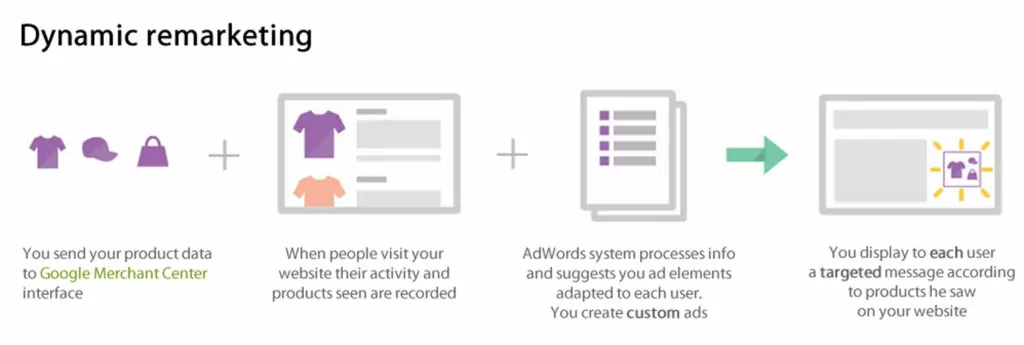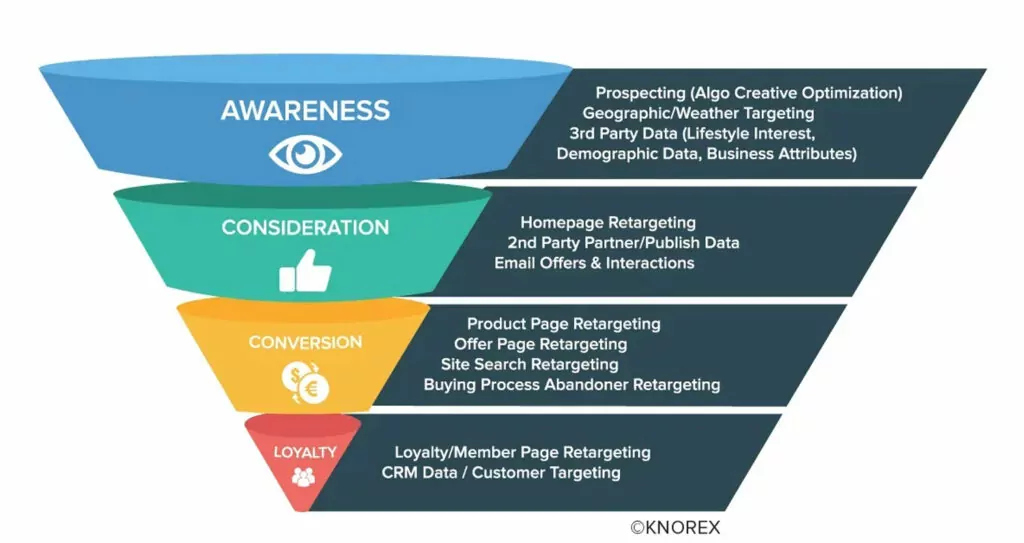Digital marketing is an effective way to reach a wide audience range and increase visibility. It enables you to use a cross-channel approach to make contact with people who spend time online. Best of all, it allows you to create dynamic ad campaigns that engage and convert.
Dynamic ads adjust based on real-time user behavior to deliver a custom experience that resonates with your audience. Since 60% of customers willingly share their personal information to receive custom offers and messages, dynamic ads help you boost conversion rates and gather more leads for future ad campaigns. They help you drive traffic to your site, create a custom experience for today’s discerning customers, and increase sales and revenue.
Read on to learn more about how to create dynamic ad campaigns across channels that yield the best results.
Key Takeaways
- Dynamic ads adjust their content based on user behavior to deliver a tailored ad that’s relevant and increases conversions.
- Their automation, delivery of targeted solutions, and cross-channel reach make dynamic ads a major asset to your digital marketing strategy.
- Create dynamic ad campaigns across channels in five simple steps.
What Exactly are Dynamic Ads?
Dynamic ads are typically banner ads that read user behavior and make adjustments to price, content, and calls-to-action to ensure the ad is relevant to its audience. They’re especially helpful in remarketing campaigns to connect with people who have already shown interest in a brand.
Source: FAQ BusinessTech
Dynamic ads are typically one of three formats:
- Dynamic Search Ads: Most search ads are positioned based on keyword bids. With dynamic search ads, search engines scan your website’s content to find relevant matches. This helps you capture the searchers whose needs align with your solutions.
- Dynamic Display Ads: These are banner ads on a website that change content based on the behavior of people visiting that site. Responsive ads can also adjust the size based on page layout and space available. This means your ad always appears at its best quality regardless of screen size.
- Social Dynamic Ads: With nearly 4 billion people on social media, it’s a huge pool of potential customers. Dynamic ads on social platforms can target people based on user profiles to show the right information to the right people. Content is mostly taken from your product feed, so it requires little modification. The following video explains how a Facebook dynamic ads campaign can help you connect with your audience:
Because dynamic ads are constantly changing to provide tailored information to their audience, the click-through rates are typically higher and yield greater conversion rates. They help propel prospects through the sales funnel, improving ROI and maximizing advertising spend.
What are the Benefits of Dynamic Ads?
While there are multiple advantages to using dynamic ads in your digital marketing campaign, they offer three main benefits.
1. Save Time
Because dynamic ads adjust their content and appearance through automation, they don’t require a big investment of time to ensure you’re delivering relevant information to your consumers. This frees you up to focus on other aspects of your marketing strategy to continue to drive success in other areas. You can also spend more time analyzing the data of your campaigns to align your targeting efforts with your business and advertising goals.
2. Develop Your Reputation
Dynamic ads help build brand awareness and recognition, but they also help to develop your reputation as a company that offers valuable solutions. When your ads provide specific answers to unique problems, people rely on you as a useful resource for their needs. This helps you connect with viewers and build deeper, lasting relationships, which is important because returning customers make 65% of a business’s purchases.
3. Cross-Channel Reach
The flexibility of dynamic ads means they can appear on several channels and still provide relevant information that resonates. Their responsive adjustments allow them to maintain their integrity regardless of device or screen size, so they can deliver valuable tailored content regardless of how or where people are accessing them. Their cross-channel reach allows you to connect with a large audience and deliver custom content that is likely to convert.
5 Steps to Create Dynamic Ad Campaigns Across Channels
Create an impactful dynamic ad campaign across multiple channels in five simple steps.
Step 1: Know Your Audience
Gain an understanding of who your audience is and what their needs are. Demographics and shopping behaviors can provide clues about where they spend their time online, how they prefer to receive brand information, and the best time to reach them online. Knowing the problems they’re facing and where they are in their customer journey can help you determine what content they need to see. This information will shape the rest of your dynamic ad campaign.
Step 2: Set Goals
Decide what you want to accomplish with your dynamic ad campaigns. Goals could include getting people to buy a specific product, register for an email list, or visit your website. The ad’s objective will help you know what content to include in the ad, what call to action to feature, and where to place the ad for maximum impact.
Step 3: Understand Dynamic Creative Optimization (DCO)
DCO is the machine learning technology that automatically adjusts dynamic ads to create personalized experiences for your target audience. Real-time data tells the engine which elements to use in the ad, like which products to display and whether video or image would perform best. Then, the engine arranges the components for the best experience for each viewer. Consider DCO as you begin to develop and design your ad campaign.
Source: KNOREX
Alt-Text: DCO results in optimized content and creatives that deliver optimal results.
Step 4: Create Multiple Versions of Your Ad
Create a master template of your ad, then develop different versions that feature other images, varying copies, and different calls to action. Choose the versions you want to test and make predictions about how they’ll do in the marketplace.
Test these ads on various channels to see what attracts more people and which ads have the best performance. Post on social media platforms, websites, and even email campaigns. Explore your digital marketing options and see what works best for your audience.
Step 5: Analyze Results
The only way to know whether your ad campaign is successful is to track its data. Analyze results to see what ad content, formats, and positions are drawing the most attention. Gauge whether your DCO system is making effective and impactful adjustments for better conversions.
Use the information you’ve gathered to determine which channels are working well, what content seems to resonate, and what layouts are catching your viewers’ eye. Analytics will help you determine whether you’re on course to meet your goals and what changes you should make for optimal results.
Create Dynamic Ad Campaigns That Convert
MXTR provides a multichannel consumer messaging platform for multi-location brands. Our invaluable insights help you create impactful digital marketing strategies that convert.
Schedule a demo today to see how we can help you create dynamic ad campaigns that generate revenue.
Featured Image: istockphoto









